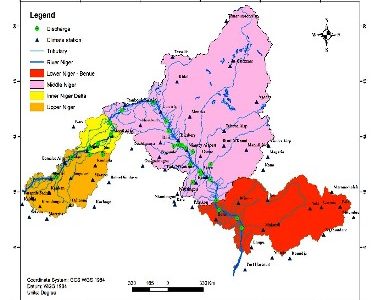Cybersecurity will get more monstrous; 5G networks will get hotter and crowded
Here’s a picture of how 2022 will look like according to Strand Consult. Cloud services will explode; OpenRAN will continue to draw interest but mobile operators will still buy classic RAN; China and Huawei will probably have another difficult year; Cybersecurity will get more monstrous; Amazon, Google, Facebook, Microsoft – Big Tech will keep mutating faster than Corona. And yes, the markets for mobile phones and services will get more boring while 5G networks will get hotter and crowded.
Strand Consult has followed the mobile telecom industry for more than 25 years and has published predictions for the last 21. See the collection. This research note reviews the highs and lows from the mobile telecom industry in 2021 and makes predictions for 2022. This past year developed very differently from other years but was not so different from 2020.
In 2020 we claimed that it was an understatement to say that COVID-19 was a game changer. Many of the changes implemented in 2020 have become the new normal. Strand Consult has long described how telecommunications are the foundation for the modern society. Without telecommunications, society would have collapsed from COVID-19. The bottom line is that communications networks built and run by operators are more important than ever. 2021 proved once again this assertion beyond the shadow of a doubt.
We wish you a Merry Christmas and a Happy New Year
What happened in 2021 and what’s going to happen in 2022.
2021 started with the Consumer Technology Association (CTA), turning its physical event Consumer Electronics Show (CES) in Las Vegas into a digital event. In February, GSMA made its Barcelona Mobile World Congress (MWC) into a combination digital/physical event. Usually MWC attracts about 100,000 guests; in 2021, there were about 20,000 participants, of which only 5,000 came outside Spain
GSMA expects to implement MWC 2022. The question is whether the physical part will be much bigger than what we saw in 2021. Though there are fewer hospitalizations with this wave of COVID, more people become sick and need to stay in bed for at least a week. This will likely impact business negatively, particularly labor-heavy companies. This is likely to impact the physical portion of MWC negatively, as participants are likely to stay home.
2022 will continue to showcase that the mobile telecommunications industry plays a critical role in enabling modern society to work. Telecom companies should receive more goodwill and should become better to exploit it.
At Strand Consult, a lot happened in 2021
Strand Consult enjoyed another busy year working across the continents. Our growing team of experts launched many important reports and research notes. Strand Consult also launched its guest blog universe Telecom Expert Voices and expects to offer more timely and exciting analyses in the coming year.
Strand Consult kicked off its first study of the broadband middle mile and showed that rural broadband providers have many challenges to deliver broadband to disparate customers over large geographic areas. The study creates transparency for policymakers about the cost, level, source of internet traffic. It demonstrates that 5 “Big Streamers” account for a disproportionate share of downstream traffic. For every $1 of revenue earned from the 5 Big Streamers (Netflix, YouTube, Amazon, Disney+ and Microsoft), rural broadband providers incurred $0.48 in middle mile costs (equipment, electricity and labor) which they could not recover from the Big Streamers, end users, or government reimbursement programs.
The Big Streamers have tremendous global market power and ignore broadband providers’ requests to negotiate on cost recovery. Moreover the “free” caching solutions proffered by the Big Streamers add costs to networks and only serve proprietary content. Strand Consult observes that there is a pervasive problem of unrecovered cost at the local, national, and international levels which threatens sustainability and undermines policy to close the digital divide. In 2022 Strand Consult will continue to analyze this critical problem.
Many talk about OpenRAN but mobile operators still buy classic RAN
For the last two years, Strand Consult has studied OpenRAN in detail and published extensively on what the technology requires to become a commercial success. OpenRAN is one of the most overhyped technical solutions since the launch of 3G in year 2000. While the OpenRAN promise to cut RAN CAPEX by as much as half does not rise to level of hyperbole that 3G would turn radio spectrum into gold, it comes close.
In December 2020, Strand Consult published a ground-breaking research note on the Chinese influence on the O-RAN Alliance. In August 2021, Nokia paused their work in the group for fear of violating US restrictions on the many Chinese members. Strand Consult has yet to find an OpenRAN proponent who can explain how the prevalence of 44 Chinese companies in the O-RAN Alliance does not compromise OpenRAN.
OpenRAN is being promoted by industry and governments from the US, Japan, Germany, the United Kingdom, and even Russia as trade policy and enterprise enhancements, though the OpenRAN market itself appears to be growing minimally. The US Executive Branch stopped referring to the O-Ran Alliance in its policy communications and now uses the OpenRAN Policy Coalition, as if it’s a technical standards development organization. Yet the OpenRAN website clearly shows that it’s an advocacy organization whose purpose is to influence governments on behalf of its member companies.
It is important to understand that OpenRAN and O-RAN are built on-top of 3GPP 4G/5G technologies. They are not solutions that can replace existing networks on a 1:1 basis. Nor do OpenRAN or O-RAN technologies support 2G and 3G, which most of the world still uses for machine2machine communications and telephony. If a legacy operator wants OpenRAN, it must likely maintain two sets of parallel base stations, one for 2G/3G and the other 4G/5G. Running two parallel networks increases rental and energy costs over one network.
If OpenRAN gets the success its proponents predict, it will account for less than 1 percent of the 5G mobile sites in 2025 and not more than 3 percent in 2030. It looks like OpenRAN is too little, too late to make a difference in a world in which operators are deploying 10,000 classic 5G sites every month.
For a critical view of OpenRAN, check out Strand Consult’s latest report Debunking 25 Myths of OpenRAN. It provides objectivity and transparency for policymakers and key questions and analysis not available in most mainstream outlets.
At the end of the day, mobile operators’ job is to deliver a great network experience to their customers. OpenRAN technologies offer only limited features compared to the 200 3GPP 5G networks launched globally by the end of 2021. In practical terms, you cannot compare the functionality of Rakuten´s in Japan 4G/5G network with the functionality of an American 4G /5G network. The US will evolve further as it upgrades from 3GPP release 15 to release 16 and 17, and Rakuten will probably fall further behind. The OpenRAN claims are even further distorted when proponents say the OpenRAN is a way for Europe to catch up to the US, China, and Korea in 5G. Note that the US and South Korea achieved 5G leadership without the use of Huawei and ZTE and without the use of OpenRAN.
2022 will see continued OpenRAN advocacy, though it will be more difficult for its proponents to evade the tough questions about the hard reality.
China and Huawei will probably have another difficult year
When Joe Biden became President in January 2020, many wondered how US policy would change in relation to China and Huawei. Strand Consult maintained that the policy was bipartisan and unlikely to change, and if anything, could be toughened, particularly as reforms adopted in 2018 gave the new administration additional tools to prosecute human rights violations
Huawei still faces significant financial pressure, and public opinion about Huawei has not changed. Many countries see it as unsafe and unsustainable to use Huawei equipment in telecommunications networks. Many operators have experienced increased reputational and regulatory risk by using Huawei, and corporate customers do not want their sensitive and valuable data to be vulnerable to the Chinese government. Strand Consult described these challenges in the research note “Is your telecom infrastructure ready for General Secretary Xi to deliver on his Taiwan promise?”
In any event, the good news is that it need not be expensive to rip and replace Chinese equipment. As operators evolve to 5G, they have planned upgrade costs already, and fortunately there are many competitively priced alternatives to Huawei. See Strand Consult’s report from 2019 which still holds: The real cost to rip and replace Chinese equipment from telecom networks.
Huawei has pivoted to the cloud market and attempts to bill itself as a trustworthy IT supplier for the public and private sectors and as an alternative to the large IT software companies which supply a combination of services and a cloud. Huawei will probably succeed with its strategy in China and in some countries sympathetic to the Chinese regime. Strand Consult believes it will be a hard sell for Huawei to convince public sector buyers in the US and Europe to buy its solution of putting data into Chinese IT systems and the Chinese cloud.
Cybersecurity is getting even bigger
In 2021, John Strand spoke at many security conferences, including the global gatherings of lawmakers at the Parliamentary Intelligence-Security Forum Panama, Budapest, and Washington. It is telling how these gathering feature leaders from across the political spectrum and from developed and emerging countries alike. All nations are concerned about addressing serious global problems like illicit finance, human trafficking, and ransomware driven by rogue nations and crime cartels. This means that secure networks and the practices to defend them will become even more important in 2022.
Both the US and EU have rolled out new policy and regulation to improve network security, including 5G. This includes the EU’s Toolbox and the US Secure Equipment Act which empowers the Federal Communications Commission (FCC) to deny equipment authorizations to firms posing unacceptable national security list. These companies include Huawei, ZTE, Hytera, Hangzhou, Hikvision, and Dahua. It is likely that drone maker DJI will be added, and many national security experts say restrictions should be increased for Lenovo, TikTok, and chip maker YMTC.
Strand Consult’s finds that the push for greater security is incompatible with OpenRAN technologies which are increasingly influenced by Chinese players.
Amazon, Google, Facebook, Microsoft – Big Tech mutates faster than Corona
There is good news and the bad news around Big Tech. Just when health authorities think they have the virus under control, a new variant emerges. Similarly, governments are trying to regulate Big Tech. Yet, just when it seems when Big Tech could be pinned down, Big Tech adapts to the new reality—with a new name, a new practice, or a new public-private partnership.
The conversation about Big Tech and its role in society will continue in 2022. Policymakers must realize that Big Tech is adapting faster than the efforts to regulate it. If anything, the regulations adopted to date like the General Data Protection Regulation (GDPR) have made Big Tech even stronger. Today these companies’ revenue, market share, and earnings have increased compared to the time before regulation. And government has made it harder for small and medium sized companies to compete.
The bottom line is that efforts to regulate big tech have failed. Governments should instead make Big Tech pay for their use of resources. Current policy allows Big Tech a free ride on telecom networks and the public’s airwaves. These giveaways only increase their market share and profitability.
These are important lessons as policymakers look at the cloud market.
The Cloud explodes in 2022
Policymakers will turn attention to public clouds which hold an increasing amount of citizen and enterprise data. Big Tech probably has more knowledge and data about people and firms that the government itself. In 2022, cloud services from Amazon, Microsoft and Google will emerge in public consciousness. It is hard to see how a Chinese “alternative” could gain traction in this market, but it still raises questions about existing cloud practices.
Mobile operators put parts of their networks in Amazon, Microsoft, and Google clouds. As mobile networks are increasingly integrated with clouds, this means that individuals and firms are even more embedded with Big Tech. There is no turning off Big Tech and no choosing not to use it.
This adds to the complexity and difficult of data portability from one cloud to another. In practice, companies may find it impossible to migrate from one cloud to another. While this sets off alarms in the antitrust world, it does not diminish the technical reality that cloud services from Amazon, Microsoft and Google are not comparable 1:1. In practice, Amazon, Microsoft and Google will not achieve the same result if you use the three platforms’ AI solutions to analyze your data. One big question in 2022 is which has the most intelligent AI solution: Amazon, Microsoft or Google.
One thing is for sure: it is far easier to switch the vendor of 5G infrastructure equipment that to switch cloud providers.
The markets for mobile phones and services are boring
Strand Consult has chronicled the development of the mobile phone market and has published popular reports on the iPhone. It has grown banal to watch Apple launch subsequent “new” versions of the iPhone which look nearly identical to the one before. With few technical improvements in each subsequent phone, the main difference is the model number. In 2021, Apple released iPhone 13, and in 2022, there will likely be an iPhone 14, and so on. It is a testament to the company’s marketing that it has been able to navigate inevitable device fatigue.
Mobile apps also lumber on with subsequent versions. The key development in 2021 has been the use of mobile apps to manage COVID-19, and that trend will continue in 2022. Additionally governments have entered the mobile app market in a big way with vaccine passports, which for many countries have become or will be de riguer.
Tower companies spread in the value chain.
Tower companies are an important part of the efforts to find profitability in an increasingly difficult telecom market. Many mobile carriers have discovered that they can sell off their towers and post unrealized assets. In Europe alone, it has contributed some €36 billion to the mobile industry.
Around the world we see these tower companies starting to spread in the value chain. In Brazil, they invest in fiber, while others consider whether to enter the spectrum market. During 2022, we will see much more of this.
A case for study is Denmark’s TDC. Three Danish pension funds PFA, PKA, ATP and Macquarie Infrastructure and Real Assets have chosen to split the telecom operator into an infrastructure company and a service company. The two new entities will be TDC Net for infrastructure and Nuuday for service. Strand Consult has followed the process closely and calls it financial acrobatics. The trend of breakup of telecommunications companies into infrastructure and service entities will be seen increasingly in 2022.
The market for private 5G networks is hot and crowded
In 2021 much was written about private 5G networks, who will build and who will run them. It’s a market in which many want to enter: everyone from mobile operators to IT companies to system integrators to infrastructure suppliers. OpenRAN players also want to enter, though it remains to be seen if they can deliver the heavy demands of a classic mobile network. Expect fierce competition, very low margins, and an inevitable shakeout.
Around the world – USA, Brazil, Asia
Every year we take a walk around the world. This year we will focus on the US, Brazil and Asia, whose stories are indicative of larger trends.
The US notched an unparalleled success with the C-band spectrum auction, a record for the US spectrum at more than $90 billion. Mobile operators were set to launch 5G in this band on December 5, but were hijacked the Federal Aviation Administration (FAA), which posted a dubious advisory about 5G transmissions and altimeters.
US planes fly to more than 50 countries where some 200 5G networks operate, and there have been no reports of interference between 5G transmissions and altimeters. The FAA, which has known of 5G for years, has done nothing to modernize altimeters. The question is which aviation lobby the FAA is protecting, which is likely small aircraft operators and possibly helicopters which don’t want to upgrade their safety equipment. Commercial aircraft makers like Boeing produce planes with three modern altimeters each. Their requested mitigation was a guard band of 110 MHz; the FCC doubled it. US operators also volunteered to reduce power levels around US airports for 6 months (to prove compatibility) and will roll out 5G in the band on January 5, 2022. Thus the US has the most generous, though excessive, protections for altimeters in the world.
In Asia, Telenor and Axiata are in the process of major consolidation. Strand Consult has studied the mobile industry for decades and believes that most policymakers do not understand the process of consolidation and its benefits. Strand Consult published a major report Understanding 4 to 3 Mobile Mergers to remedy this. The report offers an exhaustive review of the academic literature in the field combined with a summary of real-world cases.
In Brazil, the telecommunications operator Oi became an organ donor to the three major operators Vivo, Claro and TIM. In practice, Oi was divided, and its assets were distributed among the three players. After completing the 5G auctions in Brazil, it will be exciting to see how the three new and much smaller players will use their spectrum, which is likely to be used to extend existing and new broadband infrastructure with 5G/FWA.
All in all, we’re going to see that the big markets are going to set agendas for other markets. Much of what is needed requires political goodwill in a world in which the political system rarely understands the importance of what is happening.
And then the good news – 2022 will show rising prices
After mobile and broadband prices have either fallen over time, 2022 should be the year when prices rise around the world. Look no further than little Denmark which in 2021 found the telecom regulator colluding with energy companies to price-fix the wholesale price of fiber access at level above what the market offers. As such, prices are guaranteed to rise in Denmark because of regulators’ efforts. Given that the regulated price of fiber will increase, broadband prices on private networks will follow.
We also expect that many of the operators that have difficulty creating value for their shareholders through organic growth will raise prices in 2022. It follows that a highly valuable service like broadband telecommunications should increase in price. This is the law of demand, and without price increases, it will be difficult to invest in network upgrades.
Conclusion
In 2021 Strand Consult published many research notes and reports, and introduced our guest blog featuring other leading experts. Strand Consult’s mission is to help mobile telecom companies navigate a complex world and to create transparency in policy and regulatory debates. For the last 20 years, Strand Consult has made predictions for the coming year. See our archive to check whether we were right.
IMAGE: Forbes































